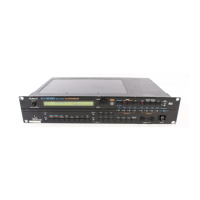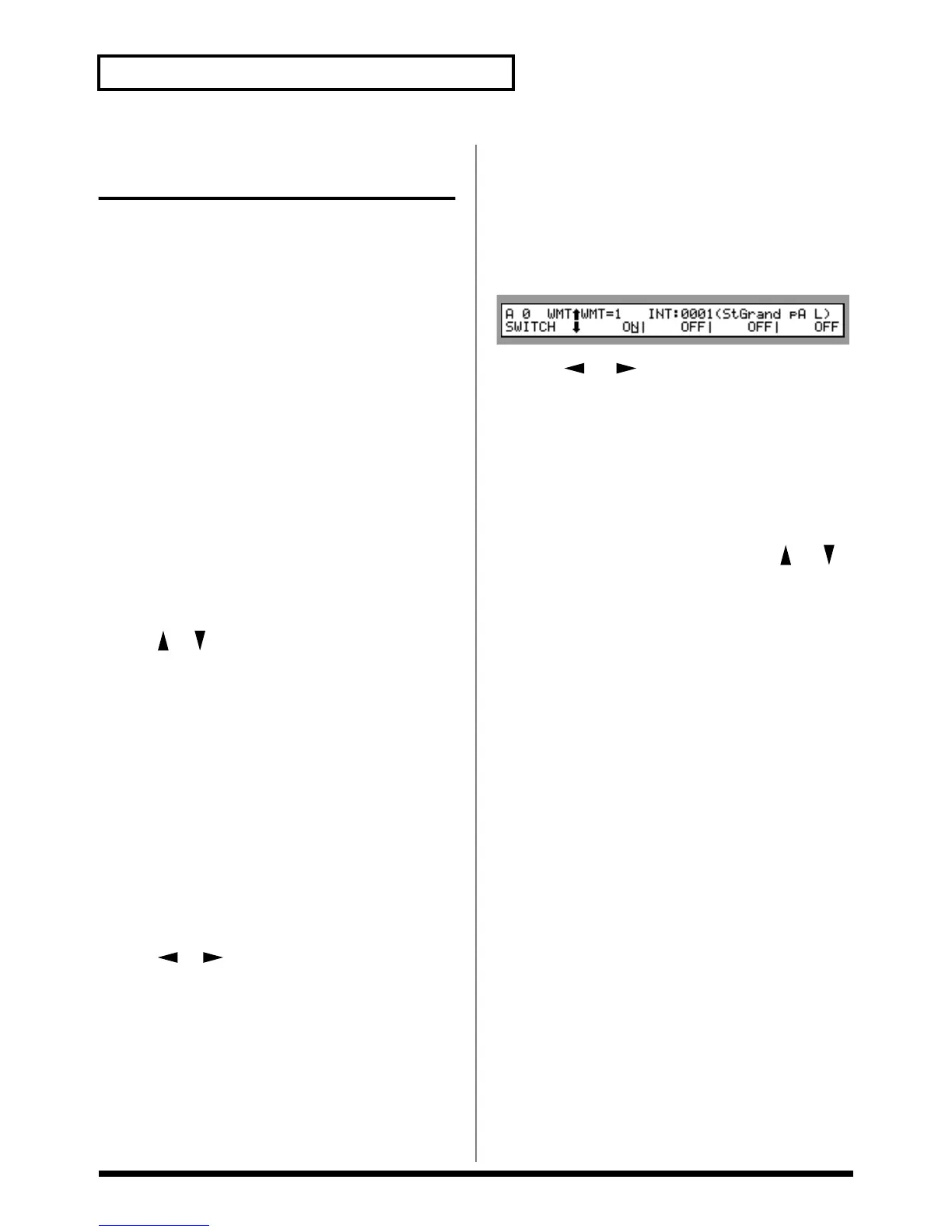112
Chapter 6. Creating a Rhythm Set
Setting up Individual Rhythm
Tones
The parameters which can be set for each Rhythm Tone of
the Rhythm Set are assigned to the function select buttons as
follows.
[CONTROL]
Other Settings (p. 118)
[WAVE]
Modifying a Rhythm Tone’s Waveform and Panning (p. 113)
[PITCH]
Modifying a Rhythm Tone’s Pitch (p. 115)
[TVF]
Modifying the Brightness of a Sound with a Filter (p. 116)
[TVA]
Making the Volume Change (p. 117)
Editing Procedure:
1. Select the Rhythm Set you wish to set.
2. Press the function select button for the parameter you
want to set.
3. Use [ ]/[ ] to select the page containing the
parameter you want to set.
4. Use [E]–[H] to select the percussion instrument sound
you wish to edit according to the key that plays it.
[E]: Selects the key one octave below the currently selected
key.
[F]; Selects the key a semitone below the currently selected
key.
[G]: Selects the key a semitone above the currently selected
key.
[H]: Selects the key one octave above the currently selected
key.
* You can also press a key on a connected MIDI keyboard to
select the desired percussion instrument sound (key). (p. 110)
5. Use [ ]/[ ] to move the cursor to the parameter
you want to set.
6. Turn the VALUE dial or by press [INC]/[DEC], to select
the desired value.
7. Press [EXIT] to return to the RHYTHM PLAY page.
Palette Function
When editing a Rhythm Tone, you can simultaneously view
the settings of all four of its Tones by pressing [PALETTE].
1. When editing a Tone, press [PALETTE] to make its
indicator light.
The Palette page appears.
fig.6-03a
2. Press [ ] / [ ] to choose the Tone you wish to
modify.
3. Turn the VALUE dial or press [INC] / [DEC] to raise or
lower the parameter’s current value to the desired
setting.
* If you make a mistake when selecting a parameter value, or if
you do not like a change you have made, press [UNDO] to
restore the parameter to its original value.
4. If you wish to edit other parameters, press [ ] / [ ]
to select the desired parameter.
5. Repeat Steps 2–4 to adjust the parameter’s value.
6. To leave the Palette page, press [PALETTE] to turn off its
indicator.
7. Press [EXIT] to return to the RHYTHM PLAY page.
Tips for Selecting Rhythm Tone
Waveforms
Because the XV-3080 is designed to create completely
realistic sounds, the editing process depends heavily on the
complex PCM waveforms upon which Tones are based.
Therefore, if you try to create a sound that is totally different
from the waveform(s) you’re working with, the desired
result may be difficult or impossible to achieve.
The XV-3080’s internal waveforms fall into the following two
groups.
One-shot:These waveforms contain sounds that have short
decays. A one-shot waveform records the initial rise and fall
of its sound. Some of the XV-3080’s one-shot waveforms are
sounds that are complete in themselves, such as percussive
instrument sounds. The XV-3080 also contains many other
one-shot waveforms that are elements of other sounds. These
include attack components such as piano-hammer sounds
and guitar fret noises.
Looped:These waveforms include sounds with long decays
as well as sustained sounds. With looped waveforms, the
latter part of the sound plays over and over for as long as the

